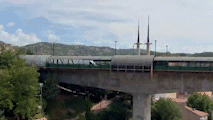A sports film is a film genre that uses sport as the theme of the film. It is a production in which a sport, sporting event, athlete (and their sport), or follower of sport (and the sport they follow) are prominently featured, and which depend on sport to a significant degree for their plot motivation or resolution. Despite this, sport is ultimately rarely the central concern of such films and sport performs primarily an allegorical role. Furthermore, sports fans are not necessarily the target demographic in such movies, but sports fans tend to have a large following or respect for such movies. In the sports genre, characters play sports. Thematically, the story is often one of “Our Team” versus “Their Team”; one team will always try to win, and another team will show the world that they deserve recognition or redemption, though the story does not always have to involve a team. The story could also be about an individual athlete or the story could focus on an individual playing on a team.



















